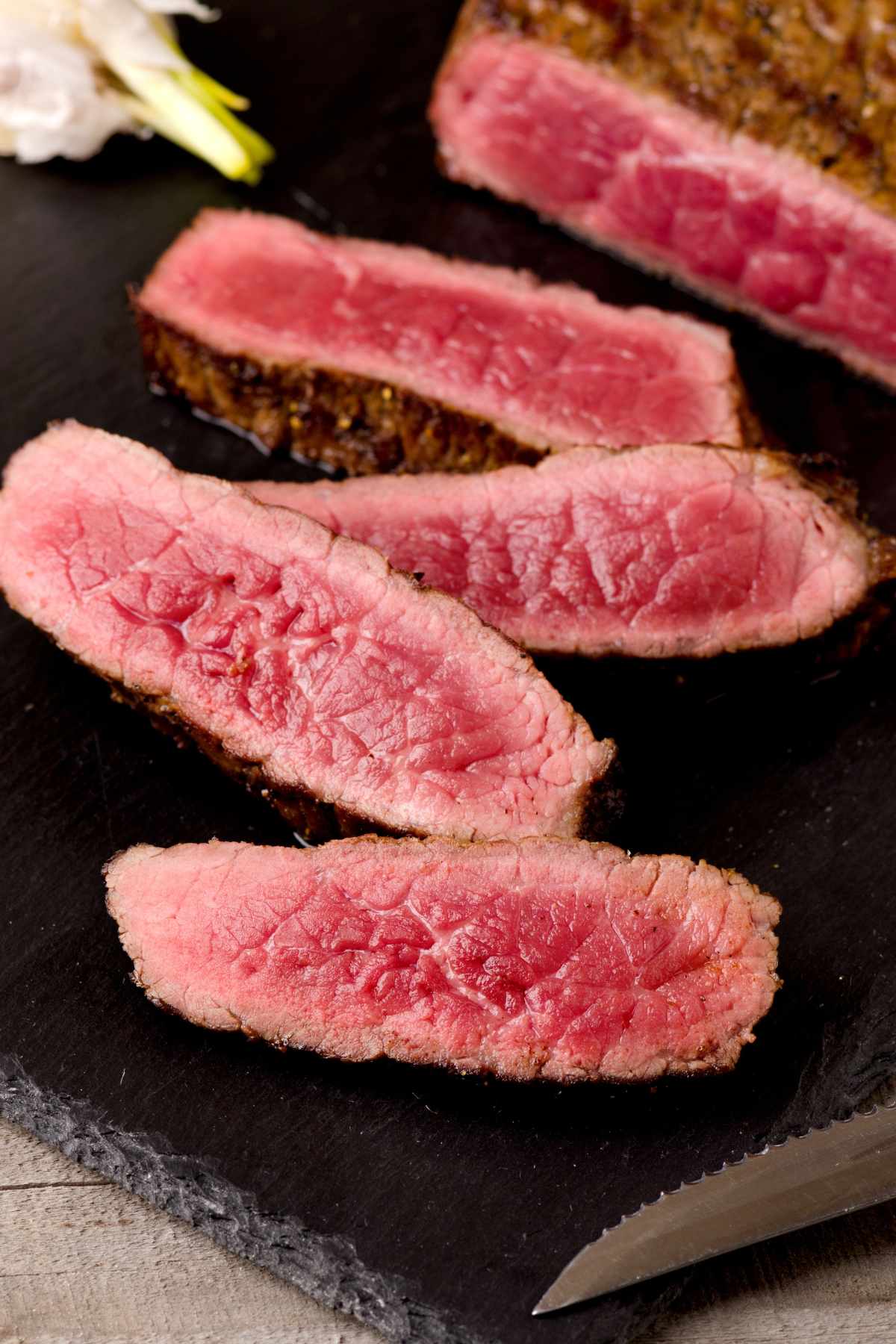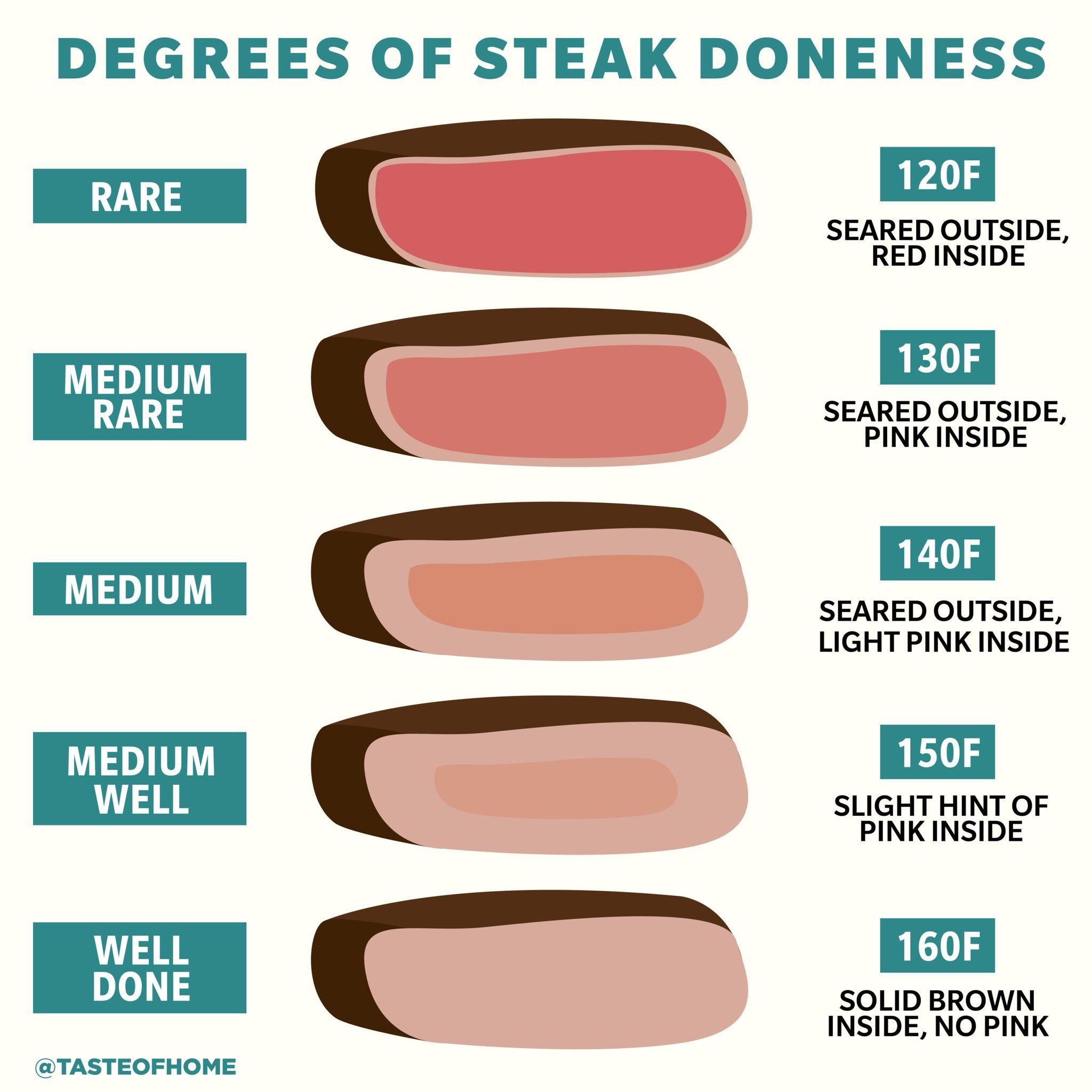Beef Medium Rare Temp: The Ultimate Guide For Steak Perfection
Let’s get real here, folks. If you’ve ever stepped into a steakhouse or whipped up a filet mignon at home, you’ve probably heard the term “beef medium rare temp.” But what does it actually mean? Is it just a fancy way of saying “don’t overcook your steak,” or is there more to it? Well, buckle up, because we’re diving deep into the world of beef temps, and by the end of this, you’ll be a certified steak whisperer.
Now, I know what you’re thinking. “Why does the temperature of my steak matter so much?” Great question! The truth is, the temperature of your beef can make or break your dining experience. Whether you’re cooking for yourself or impressing guests, understanding the perfect medium rare temp is key to unlocking flavor and tenderness like never before.
So, let’s break it down. We’ll explore everything from the ideal internal temp for medium rare beef to how to check it like a pro. Along the way, we’ll sprinkle in some tips, tricks, and even a few fun facts to keep things interesting. Ready? Let’s dig in!
Here’s the roadmap we’ll be following:
- Biography of Beef Medium Rare
- Beef Medium Rare Temp Guide
- Tools You’ll Need
- Cooking Methods for Medium Rare
- Common Mistakes to Avoid
- Health Benefits of Medium Rare Beef
- Perfect Pairings for Your Steak
- Frequently Asked Questions
- Conclusion: Take Your Steak Game to the Next Level
Biography of Beef Medium Rare
Before we jump into the nitty-gritty, let’s take a moment to appreciate the journey of our beloved medium rare steak. It’s not just a piece of meat; it’s an experience. Picture this: you’re sitting in a cozy steakhouse, knife and fork in hand, ready to dive into a perfectly cooked steak. That steak? Yeah, it’s been on quite the adventure.
From Farm to Table
Beef starts its journey on the farm, where it’s raised with care (or at least, that’s how it should be). Once it reaches your plate, it’s undergone a transformation that involves butchering, aging, and finally, cooking. And let’s not forget the most crucial part – getting that temp just right.
Here’s a quick breakdown of the life cycle of your steak:
- Grass-fed or grain-fed cattle
- Butchering and dry-aging
- Portioning into cuts like ribeye, filet mignon, or sirloin
- Cooking to your desired temp
Beef Medium Rare Temp Guide
Alright, let’s talk numbers. The ideal internal temp for medium rare beef is around 130°F to 135°F (54°C to 57°C). But why is this range so magical? At this temp, the steak retains its juiciness, the fat has rendered beautifully, and the flavor is off the charts.
Why Medium Rare?
Medium rare is often considered the gold standard for steak enthusiasts. Here’s why:
- It offers the perfect balance of tenderness and flavor.
- The pink center is both visually appealing and delicious.
- It retains more moisture than higher temps, keeping the steak juicy.
Tools You’ll Need
Cooking a perfect medium rare steak isn’t rocket science, but having the right tools certainly helps. Here’s what you’ll need:
Meat Thermometer
A good digital meat thermometer is your best friend. It takes the guesswork out of checking the internal temp of your steak. Look for one with fast response times and accurate readings.
Cast Iron Pan
For stovetop cooking, a cast iron pan is your go-to. It holds heat beautifully and gives your steak that coveted sear.
Grill
If you’re grilling, make sure your grill is preheated to high heat. This will help you achieve those beautiful grill marks and lock in the juices.
Cooking Methods for Medium Rare
There’s more than one way to cook a steak, and each method has its own charm. Let’s explore some popular techniques:
Pan-Seared
This method involves searing the steak on high heat in a pan and then finishing it in the oven. It’s perfect for achieving a crusty exterior and a tender interior.
Grilling
Grilling is a classic choice for outdoor cooking. It imparts a smoky flavor and those iconic grill marks. Just be sure to monitor the temp closely!
Sous Vide
If you’re feeling fancy, sous vide is a game-changer. It involves cooking the steak in a vacuum-sealed bag in a water bath at a precise temp. The result? A perfectly cooked steak every time.
Common Mistakes to Avoid
Even the best chefs make mistakes sometimes. Here are a few pitfalls to watch out for:
- Overcooking: This is a big no-no. Overcooked steak becomes tough and dry.
- Not Letting It Rest: After cooking, let your steak rest for a few minutes. This allows the juices to redistribute.
- Using the Wrong Cut: Not all cuts are created equal. Choose a cut that’s well-suited for medium rare, like ribeye or filet mignon.
Health Benefits of Medium Rare Beef
Believe it or not, eating beef medium rare can actually be good for you. Here’s why:
Packed with Nutrients
Beef is a great source of protein, iron, and B vitamins. Cooking it medium rare helps preserve these nutrients, making it a healthier choice than overcooked or well-done beef.
Less Fat Loss
Cooking beef at lower temps means less fat is lost during the cooking process. This keeps the steak juicy and flavorful while still being a lean protein option.
Perfect Pairings for Your Steak
No steak is complete without the perfect sides and drinks. Here are some ideas:
- Red Wine: A bold red like Cabernet Sauvignon or Malbec pairs beautifully with medium rare steak.
- Roasted Vegetables: Think Brussels sprouts, asparagus, or carrots. They add a pop of color and flavor to your plate.
- Mashed Potatoes: Creamy and comforting, mashed potatoes are the ultimate comfort food to go with your steak.
Frequently Asked Questions
Got questions? We’ve got answers. Here are some FAQs about beef medium rare temp:
What Happens If I Cook My Steak Beyond Medium Rare?
Overcooking can lead to a tougher, drier steak. Stick to the recommended temp range for the best results.
Can I Eat Steak Below Medium Rare?
While some people enjoy their steak rare or even blue, medium rare is generally considered the sweet spot for flavor and safety.
Conclusion: Take Your Steak Game to the Next Level
There you have it, folks – everything you need to know about beef medium rare temp. From understanding the ideal temp to avoiding common mistakes, you’re now equipped to cook the perfect steak every time.
So, what are you waiting for? Head to the kitchen, fire up the grill, and get cooking. And don’t forget to share your newfound knowledge with friends and family. After all, a great steak is even better when shared with good company.
Got any tips or tricks of your own? Drop them in the comments below. And if you loved this article, give it a share. Let’s spread the steak gospel together!



Detail Author:
- Name : Mr. Paul Klein Sr.
- Email : price.russ@hotmail.com
- Birthdate : 1973-08-13
- Address : 8176 Miguel Square Suite 728 Floborough, DC 85858-5291
- Phone : 346.590.3591
- Company : Stracke-Boyle
- Job : MARCOM Director
- Bio : A ipsum veritatis tenetur veritatis officiis. Voluptatem voluptas qui sed repellendus repellendus recusandae ut. Autem ipsam optio officiis. Est hic vitae dolorem nostrum autem architecto.